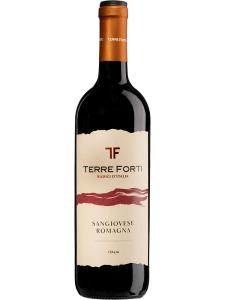Romagna is the catch-all regional DOC title for the Romagna province – the eastern half of Emilia-Romagna. It specializes in wines made from the Albana, Cagnina, Pagadebit, Trebbiano and Sangiovese grape varieties. Sangiovese is by far the most important of the five varieties here, in terms of both quality and quantity. The DOC's Sangiovese wines come in both superiore and riserva forms. The typical Romagna Sangiovese wine tastes of sour cherry, baked plum and herbs, sometimes with a note of fresh tobacco.
The Romagna DOC was made official in October 2011, after many months of debate and bureaucracy. It is an agglomeration of the former Cagnina di Romagna DOC, Pagadebit di Romagna DOC, Sangiovese di Romagna DOC and Trebbiano di Romagna DOC appellations. Significantly, the new DOC did not absorb Emilia-Romagna's only DOCG, Albana di Romagna.
The erstwhile DOC titles which were merged to create this new DOC have not been lost entirely. They remain as official "styles" of the new DOC: Romagna Sangiovese, Romagna Trebbiano, Romagna Cagnina and Romagna Pagadebit.
Romagna Sangiovese is considered the finest of Romagna's wines. This has much to do with the qualities of Sangiovese itself, not to mention the various legends associated with the variety. Romagna figures prominently in one of these legends. It tells of an esteemed guest visiting a Capuchin monastery on Mount Jove, a sacred hill near the town of Santarcangelo di Romagna. Impressed by the local wine, the guest demanded to know what it was called. The wine had no particular name at the time, but a quick-thinking friar came up with a new one: Sanguis Jovis, meaning "blood of Jove". This evolved over the years into the name Sangiovese that we know today. A memorial stone to Sangiovese stands on Mount Jove to this day.
The Cagnina cited here is, in fact, a synonym of the Refosco variety, most often associated with northern Italy's Friuli region. It is said to have been introduced to Romagna in the 13th Century, during the construction of the city's most important Byzantine monuments. At this time, vast amounts of limestone were transported to Romagna from Carso and the Dalmatian coast of Croatia, where Refosco vines were common. Cagnina wines are typically deep purple in color with sweet fruit intensity, offering notes of strawberry and raspberry. They are mainly produced for early consumption, although some have the capacity to age for a couple of years in favorable vintages.
Pagadebit, just like Cagnina, is a synonym of a variety known better by another name: Bombino Bianco. The name means "debt payer" in Romagna's old dialect – its ability to produce fruit meant poor vine growers could pay off their debts, even in the most difficult years. It is an extremely fertile and productive variety with tough skins, making it highly resistant to parasites and adverse climatic conditions. At the start of the 1970s the vine was on the brink of extinction, but it was revived by innovative viticulturists who applied modern winemaking techniques. With serious commitment and determination, the resultant wines emerged in the limelight to receive a DOC classification in 1989.
Several sparkling wine styles are made under this DOC, including Albana spumante and Pagadebit frizzante. Trebbiano may be made either frizzante (lightly sparkling) or spumante (fully sparkling).
There were various reasons for merging the four into one. Efficiency was a key driver, of course. In a world where marketing is of ever-greater importance to wine, excessive fragmentation can be a serious commercial disadvantage. The united DOCs are now represented by a single, strong consorzio working to promote Romagna wines collectively. The advantages of this over the former model (four weaker DOCs effectively competing with one another) are clear.
A happy side effect of the Romagna DOC is one of symmetry. Now, both Emilia and Romagna (the two historical provinces which make up the Emilia-Romagna region) have their own appellation title. There remains a slight imbalance, however; Emilia is an IGT, but Romagna is a full DOC. See Italian Wine Labels.



